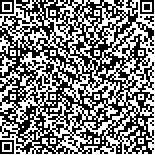李东升,古祺,李学,等.间歇性抗阻训练联合低频重复经颅磁刺激对帕金森病患者运动功能恢复的影响[J].中华物理医学与康复杂志,2023,45(4):307-311
扫码阅读全文

|
| 间歇性抗阻训练联合低频重复经颅磁刺激对帕金森病患者运动功能恢复的影响 |
|
| |
| DOI:10.3760/cma.j.issn.0254-1424.2023.04.004 |
| 中文关键词: 帕金森病 间歇性抗阻训练 低频重复经颅磁刺激 运动功能 肌张力 |
| 英文关键词: Parkinson′s disease Resistance training Transcranial magnetic stimulation Motor function Muscle tone |
| 基金项目:河南省科技厅科技攻关项目(192102310085) |
|
| 摘要点击次数: 4445 |
| 全文下载次数: 3996 |
| 中文摘要: |
| 目的 观察间歇性抗阻训练联合低频重复经颅磁刺激(rTMS)对帕金森病(PD)患者运动功能恢复及肌张力的影响。 方法 采用随机数字表法将104例PD患者分为观察组及对照组,每组52例。2组患者均给予常规药物及低频rTMS治疗,观察组患者在此基础上辅以间歇性抗阻训练。于治疗前、治疗8周后采用统一帕金森病综合评定量表-Ⅲ(UPDRS-Ⅲ)和Berg平衡量表(BBS)评价患者运动功能情况,采用改良Ashworth量表(MAS)评价患者肢体肌张力,采用三维动作处理系统采集、分析患者步态运动学数据,采用运动自我效能量表(ESE)、改良Barthel指数量表(MBI)评价患者运动心理状态及日常生活活动能力。 结果 治疗后2组患者UPDRS-Ⅲ、MAS、BBS、ESE、MBI评分及各步态空间参数均较治疗前有不同程度改善,并且观察组UPDRS-Ⅲ评分[(24.84±5.43)分]、MAS评分[(1.85±0.29)分]、BBS评分[(32.16±4.10)分]、ESE评分[(45.89±6.14)分]、MBI评分[(56.84±6.14)分]及各步态空间参数[步长(45.67±6.01)cm、步幅(78.35±5.12)cm、步频(113.84±15.23)步/分钟 、步速(0.95±0.15)m/s]亦显著优于同期对照组水平(P<0.05)。 结论 间歇性抗阻训练联合低频rTMS可显著降低PD患者肢体肌张力,提高患者运动功能,其疗效优于单一的低频rTMS治疗。 |
| 英文摘要: |
| Objective To explore any effect of supplementing low-frequency repeated transcranial magnetic stimulation (rTMS) with intermittent resistance training on muscle tone and the recovery of motor function among persons with Parkinson′s disease (PD). Methods A total of 104 PD patients were randomly divided into an observation group and a control group, each of 52. Both groups were treated with conventional drugs and low-frequency rTMS, while the observation group was additionally provided with intermittent resistance training for 8 weeks. Before and after the intervention, the motor functioning of both groups was evaluated using unified Parkinson′s disease rating scale-III (UPDRS-III) and the Berg Balance Scale (BBS). Limb muscle tension was quantified using the modified Ashworth scale (MAS). The subjects′ psychological states were quantified using the exercise self-efficacy scale (ESE), and the modified Barthel index (MBI) was applied to evaluate their ability in the activities of daily living. A 3D motion processing system collected and analyzed data describing each subject′s gait kinematics. Results After the intervention, significantly greater average improvement was observed in all of the outcome measures among the observation group compared with the control group. Conclusion Combining intermittent resistance training with low-frequency rTMS can significantly reduce muscle tone and improve the motor functioning of PD patients. The combination is more effective than low-frequency rTMS alone. |
|
查看全文
查看/发表评论 下载PDF阅读器 |
| 关闭 |